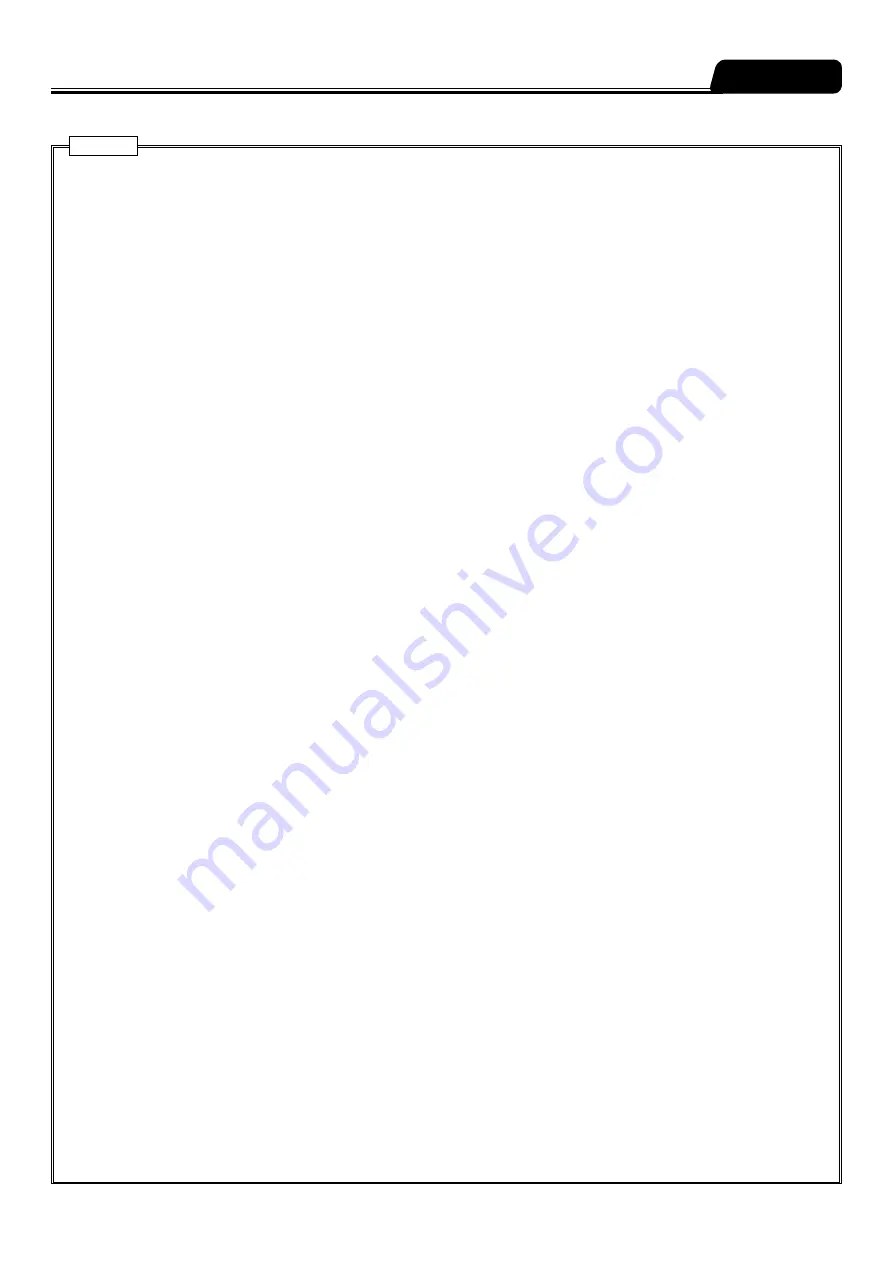
21
Precautions
Cautions
• Turn the power on before the syringe is inserted, and check that the LCD and operation indicator are flashing, and that the
buzzer sounds. [If the power is turned on when a syringe is installed, this product cannot operate a normal self-check (self-
diagnosis).]
• When installing a syringe, pull forward the clamp and turn. Then, after the syringe is set, turn the clamp back to the
original position and gently push it to fix the syringe. In addition, the slider should be moved while holding the clutch. [Any
unreasonable operation or excess operation will cause failure of this product.]
• When setting the plunger to the slider, ensure that there is no gap between the syringe plunger and slider. [If the plunger is
set and there is a gap, the air or drug solution may be sucked by the slider hook.]
• After a syringe has been installed, do not apply any force such as pulling or pushing the infusion line. [Applying these
forces may result in displacing the syringe barrel from the predefined position, temporarily delivering or sucking the drug
solution.]
• When starting solution delivery, check the volume delivered and then clear it as needed before use.
• After an Occlusion alarm is issued, always eliminate the cause of occlusion before starting. [In order to correct the volume
of bolus at the time of handling occlusions, this product has functions to automatically reduce the pressure inside the
infusion line at the occurrence of the Occlusion alarm (pulling back the slider, subtraction from the volume delivered).
Therefore, if starting without removing the cause, the infusion may not be carried out correctly such as causing the drug
solution in the infusion line to flow back to the syringe, or a repetitive Occlusion alarm status.]
• This product should be placed and used on a level and stable location. In addition, when using the IV pole, ensure that the
stand is stable and this product is securely fixed to it. [Dropping or falling may result in damage or failure.]
• When fixing this product to the IV pole, the specified pole clamp should be used. [If a pole clamp that has not been
specified is used, the function cannot be guaranteed. It may cause failure or accident.]
• When attaching a pole clamp to the pump, ensure that it is set securely. [Failure to do so may result in falling of the pump
or pole clamp.]
• When a pole clamp is used, do not release it until you have checked that this product is securely fixed to the IV pole.
[Failure to do so may result in falling of this product due to the loosened pole clamp knob.]
• Disconnect the AC power cable from this product to remove it from the AC power source. Do not place this product in an
area with obstacles that block the AC power cable from being disconnected.
• No part of this product, including the infusion line, should be taken into or used in a control area for radiation devices/
MRI or inside a hyperbaric oxygen therapy room. If any part of this product is accidently brought into these environments,
immediately discontinue use. [This product is not designed to be used in these environments. Malfunction, damage or
degradation of this product may occur or it may lead to explosion.]
• During solution delivery, at a low flow rate in particular, do not move this product up or down. [The internal pressure level of
the infusion line changes due to gravity, which may cause excessive infusion or back-flow.]
• Since this product is precision equipment, it should not be used if it has received any impact (drop to floor, falling from
the IV pole, violent shock). [Even though no fault is observed in the product appearance, the original functionality or
performance (flow rate accuracy and various alarm functions, etc.) of this product may not be achieved, and therefore
inspection is required.]
• When purging a drug solution with high viscosity through a thin intravenous needle, an Occlusion alarm is likely to be
issued even if the infusion line is not occluded. A solution with high viscosity, deliver it at the rate of 100 mL/h or lower, not
by purging it. [If purging is continued, an Occlusion alarm may frequently be issued or the solution may be unable to be
delivered.]
• Use the drug solution after it has adjusted to the room temperature. [If the drug solution is used when it is still cold, it
interferes with the movement of the syringe (causing resistance of the plunger), frequently causing the Occlusion alarm to
be issued.]
• Use this product at the level of the patient’s heart in a range of ±130 cm.
• When using this product together with other infusion systems, note that the alarm functions can be activated by one of
those systems.
• Since drug solution may cause a short circuit, ensure that the connecting sections of the AC inlet and AC power cable are
not wet when connecting. If moisture is present, ensure that the power is turned off and the AC power cable is removed
from both the pump and earthed AC power source, and then thoroughly wipe with a dry cloth. [Since this product does not
have a waterproof structure, it may affect the electrical components inside, and cause a malfunction.]
• Use an earthed AC power supply for normal use. The internal battery is an auxiliary power source for when the AC power
supply is not adequately available during transportation, power failure, etc.
• Before use, check the manuals of the medical supplies and medical equipment that are used in combination.
• This product should only be operated by skilled personnel.
















































